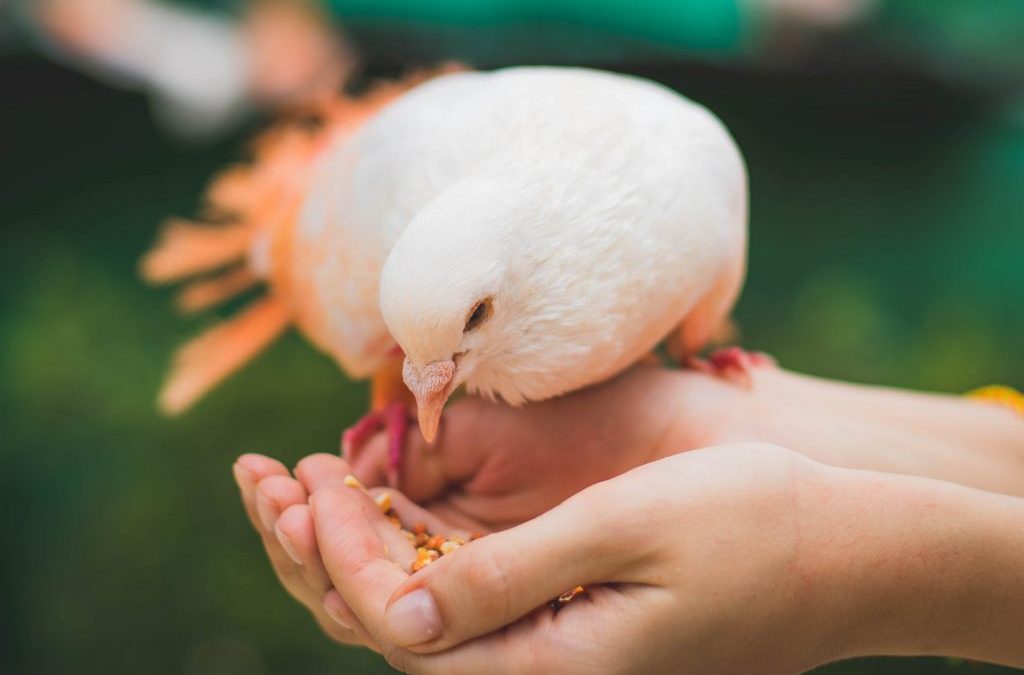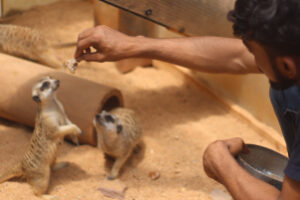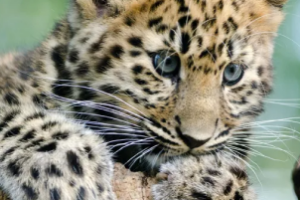
WORLD OF ANIMALS : PIGEONS AND DOVES
Pigeons and doves belong to the same family of birds (Columbidae), which consists of more than 300 species of birds. They share similar features like thick and round bodies, short necks and thin peaks, but doves are generally of a smaller stature while pigeons are often larger and stubbier.
Doves are the best alternative for someone who cannot keep up with the noise, one to one social interaction. Their interaction and cooing are pleasant to some. Doves are available all around the globe except for Antarctica. Australia has its diamond dove while Africa has the ring-necked dove. The highest diversity of columbids occurs in South America, Australasia and the Pacific Islands.
Habitat
Pigeons and doves are found in almost all terrestrial habitats from temperate areas to the tropics including lowland rainforest, highland forest, tropical deciduous forest, riparian forest, boreal forest, savanna, desert, cliff, chaparral, coral atolls, mangroves, swamp forest, woodland edge, agricultural areas, suburban and urban areas. The highest diversity of pigeons and doves occurs in tropical rainforests. They can be found from sea level to 5000 m and their excellent flying abilities have led them to colonize oceanic islands.
Physical Description
Pigeons and doves are stocky birds that range from 15 to 75 cm long and weigh from 30 to over 2000 g. The smaller species within Columbidae are often called doves and the larger species pigeons, but these names do not necessarily reflect true differences and are often used interchangeably. Columbids have small heads and short beaks and legs. Their flight muscles may make up to 44% of the bird’s body weight and allow them to have excellent flying capabilities and maneuverability. Wing-shape is often a good indicator of the species’ migratory behaviour. They have soft skin at the base of their bills and a ring of bare skin around their eyes that can be red, blue, yellow or white.
Life Span
The average lifespan for pigeons and doves is 5-6 years. The oldest known free-living bird, discovered through bird banding research, was over 31 years old. This is the record lifespan for a North American bird that lives on land.
Care and Feeding
Doves require a wide cage due to their habit of flying back and forth. It also helps in keeping the doves healthy. Doves require a special type of grit as well as calcium supplements in their diet. Pigeons and doves can be seen feeding in flocks. They are primarily graminivorous and frugivorous, but occasionally they eat insects, snails, worms, lizards, leaves, buds and flowers. Seeds are picked up off the ground and eaten whole and fruits are plucked from trees. Graminivorous species have specialized gizzards, intestines and oesophagus that help them eat and digest seeds. Grain is stored in their crops and ground by the grit in their gizzard. Graminivorous species need to drink a lot of water in order to digest seeds. Desert species get their water from succulent plants and have the ability to drink saline water. Columbids drink by submerging their beaks into the water and sucking the water up, they do not scoop water in their beaks and lift their heads to swallow like most birds.
Breeding
Doves and pigeons have a very strong reproductive drive and many will breed indoors. In general the tropical or subtropical species are the easiest to breed. All the birds in this family are monogamous, meaning they mate for life. However they will generally take another mate if something happens to permanently remove the chosen mate. Sometimes a male will kill his mate.
Sexing:
For pigeon and dove breeding you will need a sound compatible pair. Many doves and pigeons are not easily sexed though there are a few species that are dimorphic, having distinctive markings differentiating the male from the female. If the sex is not visually obvious, it can be be determined by either a surgical probe, endoscopy, which can be done by many veterinarians or by a DNA testing, usually a blood sample or a few plucked feathers sent to be diagnosed in a lab. Most breeders will keep young birds in a pen together until after the first molt and let them pick their own mate. This usually works, though sometimes what you think is a pair is two of the same sex. If a pair lays three or more eggs, then you have two hens.
Nest:
These birds are noted for building rather flimsy nests. In the wild they will construct a nest or platform using a few twigs, grasses, roots, and maybe a few leaves. They will often build their nest on a rocky ledge or in the branches of trees or shrubs, but sometimes they just use the old nest of other doves and pigeons or other birds. For many species you can provide a nest platform or a shallow box, pan, or basket. For the hole nesting birds provide a nest box. Nesting materials for the smaller species can be such things as grass hay, coconut fibers, and moss. For the larger species it can be twigs, pieces of willow, birch, moss, and straw. Fill half the nest with material and put some on the platform to encourage nesting. Both parents will help with the nest building to some degree.
Egg Laying and Hatchlings:
The female will generally lay two eggs and both parents will incubate (though the female does most of it) for 13 to 19 days. There is usually one of each sex if both eggs hatch The hatchlings are fed by both parents on a special food called ‘crop milk’ for the first 4 or 5 days, and then the crop milk becomes mixed with more solid food. Crop milk is a combination of partially digested food and a curd-like substance from the parents’ crop. The young will fledge in about 12 to 20 days. It is important to provide plenty of water for the parents when they are feeding you.
General Health Concerns
Doves are susceptible to red mites that come out at night and feed on the bird’s blood. Doves housed outdoors are susceptible to roundworms, tapeworms, and other species of worms. Those who keep doves should always wash their hands after handling, feeding or cleaning the dove’s housing because doves are likely to transfer Chlamydia and Salmonella to people. Considering everything, doves are probably healthy birds.
Sounds and Calls
Pigeons and doves have a variety of songs and calls that they use to find mates, signal danger, and defend territories. Males have special vocalizations that are only used in courtship and advertising. Both males and females sing; most songs are flute-like cooing noises that differ in the length of each note and in the interval between notes. Some species sound like a whistle, and others sound more like a croak. Small Columbidae species have higher-pitched calls than larger species. Young birds have begging calls and the results of cross-fostering experiments show that songs are innate and are not learned from their parents.
Behaviour
The behaviour of a dove varies from solitary to social and can be found in groups of thousands as well. Species in hot areas rest during the hottest part of the day. In cold weather, pigeons and doves fluff up their feathers to conserve their body heat. If they are hot, they raise their feathers even more so that the tips do not touch, this allows heat to escape and helps the bird cool down. Columbids spend a lot of time preening and bathing in the sun, water, dust and rain.
Pigeons and doves are known for their navigation abilities and have been used by humans as messengers. Some species like to be seated and others are migratory. Some roam from place to place without any fixed pattern and move as their food supply changes, and some make altitudinal movements as seasons change. Some pigeons and doves fly up to 40 km each day from their roosting sites to their foraging.
Conservation Status
Some species of pigeons and doves have expanded their ranges and increased their population sizes as a result of human activities for example, ‘rock doves Columba livia’ and ‘Eurasian collared doves Streptopelia decaocto’. While other species their ranges and populations are shrinking as a result of habitat loss and fragmentation, hunting, introduced species, agriculture and pesticides. Columbids that live on islands are the most threatened. The IUCN lists 109 species of columbids in various categories from ‘Extinct’ to ‘Near Threatened.
Interesting Facts
- Doves have been used as messengers for thousands of years, particularly during war.
- The Battle of Waterloo, the Franco-Prussian War and Genghis Khan all used messenger Pigeons during battles.




